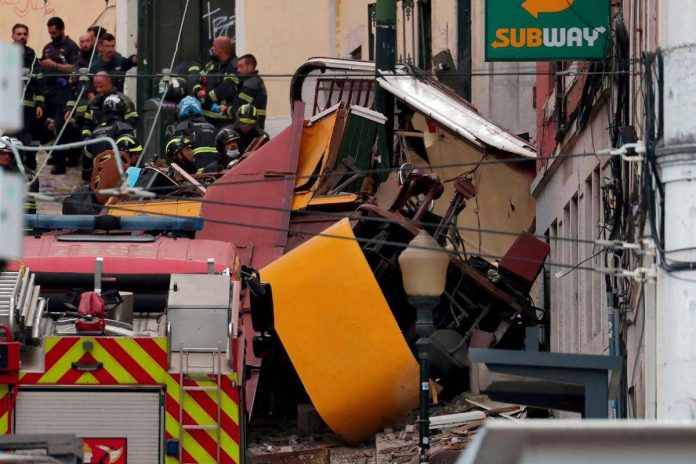LISBON: Portugal observed a national day of mourning on Thursday following a catastrophic funicular train derailment that killed at least 15 people in one of Lisbon’s most visited tourist locations.
The tragic accident occurred on Wednesday when the distinctive yellow Gloria funicular veered off its steep tracks near Liberty Avenue and smashed into a building with tremendous force.
Emergency services confirmed that 18 additional people suffered injuries in the devastating crash, with all victims including several foreigners successfully recovered from the wreckage by rescue teams.
The Portuguese government declared the national day of mourning to honour those who lost their lives, though authorities have not yet released the identities of the deceased victims.
Disturbing footage from the scene showed police and rescue personnel working through the night around the mangled funicular that lay on its side against a street wall.
A woman interviewed by SIC television channel described how the train, which typically carries about 40 passengers, struck the building with brutal force and collapsed like a cardboard box.
Lisbon Mayor Carlos Moedas characterized the incident as a tragedy of unprecedented scale that the city has never before experienced.
The office of Prime Minister Luis Montenegro stated that the accident brought profound grief to families and nationwide dismay, while European Commission President Ursula von der Leyen offered her condolences to the victims’ families.
Lisbon prosecutors announced they have opened a formal investigation into the circumstances surrounding the fatal derailment.
The city’s public transport operator Carris maintained that they had complied with all maintenance protocols and procedures without exception.
Pedro Bogas, head of Lisbon Carris, stated at the accident site that everything was scrupulously respected, noting that funicular maintenance has been handled by a contractor for the past 14 years.
Carris officials confirmed that general maintenance occurs every four years with the most recent conducted in 2022, while intermediate maintenance takes place every two years and was completed in 2024.
Antonio Javier, a 44-year-old Spanish tourist, expressed that his family felt somewhat relieved after deciding not to take the funicular due to excessively long queues.
Both tourists and local residents regularly use Lisbon’s historic funiculars to navigate the capital’s steep hills, with the iconic yellow trains featuring prominently on souvenir items throughout the city.
The Gloria funicular first entered service in 1885 and underwent electrification in 1915 according to Portugal’s national monuments website. – AFP








